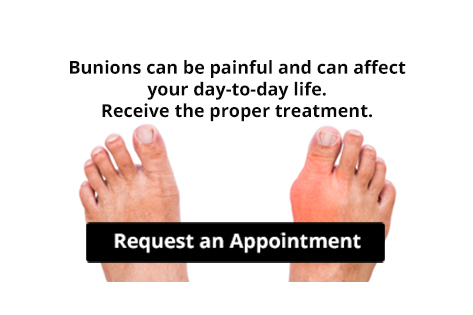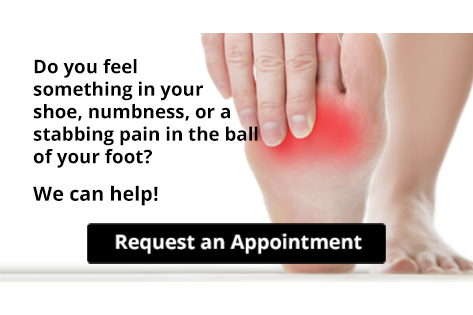Connect With Us
Blogs
Blog
The Benefits of Foot Exercises
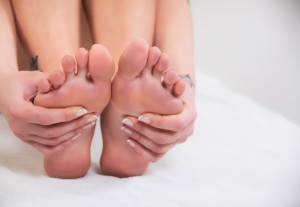 Did you know that the muscles of the feet make up 25% of your body’s total muscles? And just like any other muscles, those in the feet can benefit from regular exercise. Exercising can make the feet stronger, healthier, and more resistant to injury. There are many different types of foot exercises. Toe lifts, in which you slowly lift your toes one at a time until they are in the air, can help increase the strength and dexterity of your toe muscles. You can strengthen the muscles at the bottom of your feet by placing a towel on the floor and then scrunching it up with your toes. For more information about exercises for your foot health, consult with a podiatrist today.
Did you know that the muscles of the feet make up 25% of your body’s total muscles? And just like any other muscles, those in the feet can benefit from regular exercise. Exercising can make the feet stronger, healthier, and more resistant to injury. There are many different types of foot exercises. Toe lifts, in which you slowly lift your toes one at a time until they are in the air, can help increase the strength and dexterity of your toe muscles. You can strengthen the muscles at the bottom of your feet by placing a towel on the floor and then scrunching it up with your toes. For more information about exercises for your foot health, consult with a podiatrist today.
Exercising your feet regularly with the proper foot wear is a great way to prevent injuries and build strength. If you have any concerns about your feet, contact Dr. Michael D. Garvin from Florida. Our doctor can provide the care you need to keep you pain-free and on your feet.
Exercise for Your Feet
Exercise for your feet can help you gain strength, mobility and flexibility in your feet. They say that strengthening your feet can be just as rewarding as strengthening another part of the body. Your feet are very important, and we often forget about them in our daily tasks. But it is because of our feet that are we able to get going and do what we need to. For those of us fortunate enough to not have any foot problems, it is an important gesture to take care of them to ensure good health in the long run.
Some foot health exercises can include ankle pumps, tip-toeing, toe rises, lifting off the floor doing reps and sets, and flexing the toes. It is best to speak with Our doctor to determine an appropriate regimen for your needs. Everyone’s needs and bodies are different, and the activities required to maintain strength in the feet vary from individual to individual.
Once you get into a routine of doing regular exercise, you may notice a difference in your feet and how strong they may become.
If you have any questions please feel free to contact our offices located in Port St. Lucie, FL . We offer the newest diagnostic and treatment technologies for all your foot and ankle needs.
Read more about Exercise for Your FeetWhat Is Juvenile Plantar Dermatosis?
Juvenile plantar dermatosis is a condition that affects mainly pre-adolescents and causes chronic dry skin on the bottom of the feet. This condition is caused by repetitive friction on the feet from ill-fitting or covered shoes, excessive sweating, or genetic sensitivity of the skin. It can also be caused by changes in the climate, with worse symptoms in the summer, due to excessive sweat, and in the winter, due to the dry air and more restrictive footwear. Plantar dermatosis can cause painful cracking, fissures, and scaling to occur. It is important to seek treatment to prevent complications. If you suspect that your child may have juvenile plantar dermatosis, it is suggested that you visit a podiatrist.
Making sure that your children maintain good foot health is very important as they grow. If you have any questions, contact Dr. Michael D. Garvin of Florida. Our doctor can provide the care you need to keep you pain-free and on your feet.
Keeping Children's Feet Healthy
Having healthy feet during childhood can help prevent medical problems later in life, namely in the back and legs. As children grow, their feet require different types of care. Here are some things to consider...
Although babies do not walk yet, it is still very important to take care of their feet.
Avoid putting tight shoes or socks on his or her feet.
Allow the baby to stretch and kick his or her feet to feel comfortable.
As a toddler, kids are now on the move and begin to develop differently. At this age, toddlers are getting a feel for walking, so don’t be alarmed if your toddler is unsteady or ‘walks funny’.
As your child gets older, it is important to teach them how to take care of their feet.
Show them proper hygiene to prevent infections such as fungus.
Be watchful for any pain or injury.
Have all injuries checked by a doctor as soon as possible.
Comfortable, protective shoes should always be worn, especially at play.
If you have any questions please feel free to contact our offices located in Port St. Lucie, FL . We offer the newest diagnostic and treatment technologies for all your foot and ankle needs.
Read more about How to Care for Your Child's FeetPain Relief for Tarsal Tunnel Syndrome
The tibial nerve is located behind the bump on the inside of the ankle. The tarsal tunnel consists of a thick band of tissue, which houses the tibial nerve, arteries, and veins. Tarsal tunnel syndrome can occur when inflammation happens gradually, or from a sudden injury. Common symptoms can include a dull pain on the bottom of the foot, or a burning or tingling sensation. Some patients find mild relief when the affected foot is gently massaged. Additionally, performing specific stretches that can help to improve flexibility may be beneficial by allowing the tibial nerve to move within the tarsal tunnel. If you are afflicted with tarsal tunnel syndrome, it is recommended that you are under the care of a podiatrist who can properly diagnose and treat this condition.
Tarsal tunnel syndrome can be very uncomfortable to live with. If you are experiencing tarsal tunnel syndrome, contact Dr. Michael D. Garvin of Florida. Our doctor can provide the care you need to keep you pain-free and on your feet.
Tarsal Tunnel Syndrome
Tarsal tunnel syndrome, which can also be called tibial nerve dysfunction, is an uncommon condition of misfiring peripheral nerves in the foot. The tibial nerve is the peripheral nerve in the leg responsible for sensation and movement of the foot and calf muscles. In tarsal tunnel syndrome, the tibial nerve is damaged, causing problems with movement and feeling in the foot of the affected leg.
Common Cause of Tarsal Tunnel Syndrome
- Involves pressure or an injury, direct pressure on the tibial nerve for an extended period of time, sometimes caused by other body structures close by or near the knee.
- Diseases that damage nerves, including diabetes, may cause tarsal tunnel syndrome.
- At times, tarsal tunnel syndrome can appear without an obvious cause in some cases.
The Effects of Tarsal Tunnel Syndrome
- Different sensations, an afflicted person may experience pain, tingling, burning or other unusual sensations in the foot of the affected leg.
- The foot muscles, toes and ankle become weaker, and curling your toes or flexing your foot can become difficult.
- If condition worsens, infections and ulcers may develop on the foot that is experiencing the syndrome.
A physical exam of the leg can help identify the presence of tarsal tunnel syndrome. Medical tests, such as a nerve biopsy, are also used to diagnose the condition. Patients may receive physical therapy and prescriptive medication. In extreme cases, some may require surgery.
If you have any questions please feel free to contact our offices located in Port St. Lucie, FL . We offer the newest diagnostic and treatment technologies for all your foot and ankle needs.
Read more about Tarsal Tunnel SyndromeReasons Blisters May Develop on the Feet
 The majority of blisters are caused by friction. A blister is defined as a small pocket that is filled with fluid which protects the damaged skin underneath it. It is the body’s natural response in accelerating the healing process for raw skin. Blisters can happen as a result of wearing shoes that do not fit correctly or from wearing heavy boots while hiking. This condition may form more frequently in patients who have flat feet, in addition to people who are in the military. There are effective preventative methods that can be implemented which may reduce the risk of getting blisters. These can include wearing socks that absorb excess moisture from the feet and choosing shoes that fit correctly. One way to ensure that you get properly-fitted shoes is by purchasing them at the end of the day, when the feet are at their largest. If you have developed a blister on your foot, it can be quite uncomfortable, and it is suggested that you speak with a podiatrist who can offer you treatment options.
The majority of blisters are caused by friction. A blister is defined as a small pocket that is filled with fluid which protects the damaged skin underneath it. It is the body’s natural response in accelerating the healing process for raw skin. Blisters can happen as a result of wearing shoes that do not fit correctly or from wearing heavy boots while hiking. This condition may form more frequently in patients who have flat feet, in addition to people who are in the military. There are effective preventative methods that can be implemented which may reduce the risk of getting blisters. These can include wearing socks that absorb excess moisture from the feet and choosing shoes that fit correctly. One way to ensure that you get properly-fitted shoes is by purchasing them at the end of the day, when the feet are at their largest. If you have developed a blister on your foot, it can be quite uncomfortable, and it is suggested that you speak with a podiatrist who can offer you treatment options.
Blisters may appear as a single bubble or in a cluster. They can cause a lot of pain and may be filled with pus, blood, or watery serum. If your feet are hurting, contact Dr. Michael D. Garvin of Florida. Our doctor can provide the care you need to keep you pain-free and on your feet.
Foot Blisters
Foot blisters are often the result of friction. This happens due to the constant rubbing from shoes, which can lead to pain.
What Are Foot Blisters?
A foot blister is a small fluid-filled pocket that forms on the upper-most layer of the skin. Blisters are filled with clear fluid and can lead to blood drainage or pus if the area becomes infected.
Symptoms
(Blister symptoms may vary depending on what is causing them)
- Bubble of skin filled with fluid
- Redness
- Moderate to severe pain
- Itching
Prevention & Treatment
In order to prevent blisters, you should be sure to wear comfortable shoes with socks that cushion your feet and absorb sweat. Breaking a blister open may increase your chances of developing an infection. However, if your blister breaks, you should wash the area with soap and water immediately and then apply a bandage to the affected area. If your blisters cause severe pain it is important that you call your podiatrist right away.
If you have any questions, please feel free to contact our offices located in Port St. Lucie, FL . We offer the newest diagnostic and treatment technologies for all your foot care needs.
Read more about BlistersTreatments for Corns on the Feet
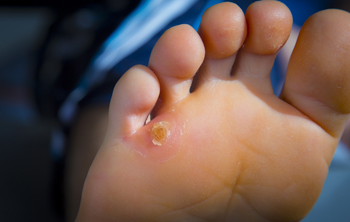 Corns on the feet are generally small, hardened areas of skin that can cause severe pain and discomfort. They develop as a result of excessive friction and can be caused by wearing shoes that do not fit correctly. Corns can develop on the soles of the feet, or between the toes. Mild relief may be found when the corn on the bottom of the foot is filed with a pumice stone, and this is beneficial to do when the skin is softened. Corns that develop between the toes are referred to as soft corns, and it may help to wear a protective pad over the affected area as daily activities are accomplished. Corns on the feet may negatively impact your day, and it is strongly suggested that you seek the counsel of a podiatrist who can properly treat them.
Corns on the feet are generally small, hardened areas of skin that can cause severe pain and discomfort. They develop as a result of excessive friction and can be caused by wearing shoes that do not fit correctly. Corns can develop on the soles of the feet, or between the toes. Mild relief may be found when the corn on the bottom of the foot is filed with a pumice stone, and this is beneficial to do when the skin is softened. Corns that develop between the toes are referred to as soft corns, and it may help to wear a protective pad over the affected area as daily activities are accomplished. Corns on the feet may negatively impact your day, and it is strongly suggested that you seek the counsel of a podiatrist who can properly treat them.
If you have any concerns regarding your feet and ankles, contact Dr. Michael D. Garvin of Florida. Our doctor will treat your foot and ankle needs.
Corns: What Are They? and How Do You Get Rid of Them?
Corns can be described as areas of the skin that have thickened to the point of becoming painful or irritating. They are often layers and layers of the skin that have become dry and rough, and are normally smaller than calluses.
Ways to Prevent Corns
There are many ways to get rid of painful corns such as wearing:
- Well-fitting socks
- Comfortable shoes that are not tight around your foot
- Shoes that offer support
Treating Corns
Treatment of corns involves removing the dead skin that has built up in the specific area of the foot. Consult with Our doctor to determine the best treatment option for your case of corns.
If you have any questions please feel free to contact our offices located in Port St. Lucie, FL . We offer the newest diagnostic and treatment technologies for all your foot and ankle needs.
Read more about Understanding Corns and CallusesWhat Is Claudication?
 Peripheral artery disease (PAD), a condition characterized by poor circulation to the lower extremities, often has no symptoms. However, when symptoms do become apparent, the first one is usually intermittent claudication. Claudication is a painful type of cramping that occurs in the hips, thighs, or calves when you are walking, climbing the stairs, or exercising. This cramping is caused by too little blood flowing to the lower limbs, and typically goes away when you are at rest. Other symptoms of PAD can include leg pain, poorly healing foot wounds, a decrease in the temperature of your legs compared to the rest of the body, and poor nail and hair growth on the legs. If you are experiencing any of these symptoms, it is suggested that you visit a podiatrist, who can screen you for PAD.
Peripheral artery disease (PAD), a condition characterized by poor circulation to the lower extremities, often has no symptoms. However, when symptoms do become apparent, the first one is usually intermittent claudication. Claudication is a painful type of cramping that occurs in the hips, thighs, or calves when you are walking, climbing the stairs, or exercising. This cramping is caused by too little blood flowing to the lower limbs, and typically goes away when you are at rest. Other symptoms of PAD can include leg pain, poorly healing foot wounds, a decrease in the temperature of your legs compared to the rest of the body, and poor nail and hair growth on the legs. If you are experiencing any of these symptoms, it is suggested that you visit a podiatrist, who can screen you for PAD.
Peripheral artery disease can pose a serious risk to your health. It can increase the risk of stroke and heart attack. If you have symptoms of peripheral artery disease, consult with Dr. Michael D. Garvin from Florida. Our doctor will assess your condition and provide you with quality foot and ankle treatment.
Peripheral artery disease (PAD) is when arteries are constricted due to plaque (fatty deposits) build-up. This results in less blood flow to the legs and other extremities. The main cause of PAD is atherosclerosis, in which plaque builds up in the arteries.
Symptoms
Symptoms of PAD include:
- Claudication (leg pain from walking)
- Numbness in legs
- Decrease in growth of leg hair and toenails
- Paleness of the skin
- Erectile dysfunction
- Sores and wounds on legs and feet that won’t heal
- Coldness in one leg
It is important to note that a majority of individuals never show any symptoms of PAD.
Diagnosis
While PAD occurs in the legs and arteries, Podiatrists can diagnose PAD. Podiatrists utilize a test called an ankle-brachial index (ABI). An ABI test compares blood pressure in your arm to you ankle to see if any abnormality occurs. Ultrasound and imaging devices may also be used.
Treatment
Fortunately, lifestyle changes such as maintaining a healthy diet, exercising, managing cholesterol and blood sugar levels, and quitting smoking, can all treat PAD. Medications that prevent clots from occurring can be prescribed. Finally, in some cases, surgery may be recommended.
If you have any questions, please feel free to contact our offices located in Port St. Lucie, FL . We offer the newest diagnostic and treatment technologies for all your foot care needs.
Read more about Peripheral Artery DiseaseGuidelines for Purchasing New Shoes for Your Child
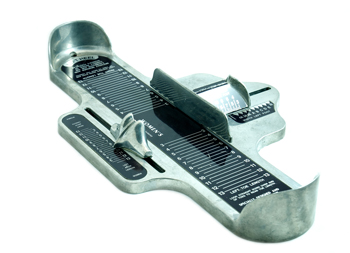 When purchasing new shoes for your children, there are general guidelines to follow that can help to ensure a proper fit. These can include shopping for shoes with your child present and wearing the socks that they intend to wear with their new shoes. It is important for the shoes to be roomy in both length and width, and that there is adequate support and cushioning. The heel should be rigid for maximum support, and although synthetic materials may be cheaper, it is better to go with quality materials such as leather or rubber. Additionally, it is beneficial to measure your child's feet before purchasing shoes. This can be accurately accomplished when a Brannock device is used. Shoes that fit properly for kids will feel comfortable when they are new, and they should not have to be broken in. It is important to make sure that there is ample room for the toes to move freely, as this may help to prevent painful foot conditions from developing. If you would like more information about purchasing shoes that fit correctly for your children, please consult with a podiatrist.
When purchasing new shoes for your children, there are general guidelines to follow that can help to ensure a proper fit. These can include shopping for shoes with your child present and wearing the socks that they intend to wear with their new shoes. It is important for the shoes to be roomy in both length and width, and that there is adequate support and cushioning. The heel should be rigid for maximum support, and although synthetic materials may be cheaper, it is better to go with quality materials such as leather or rubber. Additionally, it is beneficial to measure your child's feet before purchasing shoes. This can be accurately accomplished when a Brannock device is used. Shoes that fit properly for kids will feel comfortable when they are new, and they should not have to be broken in. It is important to make sure that there is ample room for the toes to move freely, as this may help to prevent painful foot conditions from developing. If you would like more information about purchasing shoes that fit correctly for your children, please consult with a podiatrist.
Finding a properly-fitting shoe is important in reducing injuries and preventing foot problems. For more information about treatment, contact Dr. Michael D. Garvin from Florida. Our doctor will treat your foot and ankle needs.
Proper Shoe Fitting
A common concern when it comes to foot health, having properly fitted shoes can help prevent injuries to the foot. Out feet affect our posture and gait, which in turn affects the biomechanics and overall bodily structure. With 33 joints, 26 bones, and over 100 ligaments, the potential for serious injury is much greater than one realizes. Although the feet cease growth in adulthood, they still change shape as they mature. Here are some factors to consider when it comes to investing in proper fitting shoes:
- Be sure the shoes fit correctly right away
- Ensure the ball of your foot fits comfortably in the widest portion of the shoes
- Even though they may look fashionable, improper fitting shoes can either create adverse conditions or exacerbate existing ones you may already have
- Walk along a carpeted surface to ensure the shoes comfortably fit during normal activity
Keeping in mind how shoes fit the biomechanics of your body, properly-fitting shoes are vitally important. Fortunately, it is not difficult to acquire footwear that fits correctly. Be sure to wear shoes that support the overall structure of your body. Do your feet a favor and invest in several pairs of well-fitted shoes today.
If you have any questions please feel free to contact our offices located in Port St. Lucie, FL . We offer the newest diagnostic and treatment technologies for all your foot and ankle needs.
Read more about Proper Shoe FittingFalling and the Feet
 Falling is common among children that are learning to walk. Additionally, it can affect the older population and may be a result of slower reflexes and brittle bones. Falling can cause a broken toe, foot, or ankle injuries, making it difficult to complete daily activities. There are methods that can be implemented that may help to prevent falling. These can include improving the lighting in the home environment, installing grab bars in the shower area, and having regular physical examinations, which are helpful in monitoring existing medication. Additionally, it is beneficial to strengthen the body, which is often accomplished through performing routine stretches and aerobic activity. If you would like more information on how falling can affect the feet, please consult with a podiatrist.
Falling is common among children that are learning to walk. Additionally, it can affect the older population and may be a result of slower reflexes and brittle bones. Falling can cause a broken toe, foot, or ankle injuries, making it difficult to complete daily activities. There are methods that can be implemented that may help to prevent falling. These can include improving the lighting in the home environment, installing grab bars in the shower area, and having regular physical examinations, which are helpful in monitoring existing medication. Additionally, it is beneficial to strengthen the body, which is often accomplished through performing routine stretches and aerobic activity. If you would like more information on how falling can affect the feet, please consult with a podiatrist.
Preventing falls among the elderly is very important. If you are older and have fallen or fear that you are prone to falling, consult with Dr. Michael D. Garvin from Florida. Our doctor will assess your condition and provide you with quality advice and care.
Every 11 seconds, an elderly American is being treated in an emergency room for a fall related injury. Falls are the leading cause of head and hip injuries for those 65 and older. Due to decreases in strength, balance, senses, and lack of awareness, elderly persons are very susceptible to falling. Thankfully, there are a number of things older persons can do to prevent falls.
How to Prevent Falls
Some effective methods that older persons can do to prevent falls include:
- Enrolling in strength and balance exercise program to increase balance and strength
- Periodically having your sight and hearing checked
- Discuss any medications you have with a doctor to see if it increases the risk of falling
- Clearing the house of falling hazards and installing devices like grab bars and railings
- Utilizing a walker or cane
- Wearing shoes that provide good support and cushioning
- Talking to family members about falling and increasing awareness
Falling can be a traumatic and embarrassing experience for elderly persons; this can make them less willing to leave the house, and less willing to talk to someone about their fears of falling. Doing such things, however, will increase the likelihood of tripping or losing one’s balance. Knowing the causes of falling and how to prevent them is the best way to mitigate the risk of serious injury.
If you have any questions, please feel free to contact our offices located in Port St. Lucie, FL . We offer the newest diagnostic and treatment technologies for all your foot care needs.
Read more about Falls PreventionMore...
Possible Treatment Options for Wounds on the Feet
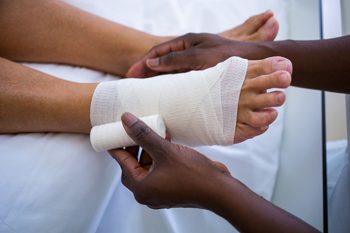 Diabetic patients are often aware that a common area for wounds to develop is on the feet. This may be a result of elevated glucose levels in the blood, which can cause nerve damage. The nerve damage can result in difficulty feeling cuts, bruises, and wounds on the feet. Proper wound care consists of washing the affected area, followed by applying an antibiotic ointment. The wound can be protected by covering it with a bandage, which can also help to control drainage. The healing process may possibly be accelerated by keeping weight off of the affected foot, which can be achieved by wearing an offloading boot. If you are afflicted with wounds on your feet, it is strongly recommended that you are under the care of a podiatrist who can guide you toward the best treatments for you.
Diabetic patients are often aware that a common area for wounds to develop is on the feet. This may be a result of elevated glucose levels in the blood, which can cause nerve damage. The nerve damage can result in difficulty feeling cuts, bruises, and wounds on the feet. Proper wound care consists of washing the affected area, followed by applying an antibiotic ointment. The wound can be protected by covering it with a bandage, which can also help to control drainage. The healing process may possibly be accelerated by keeping weight off of the affected foot, which can be achieved by wearing an offloading boot. If you are afflicted with wounds on your feet, it is strongly recommended that you are under the care of a podiatrist who can guide you toward the best treatments for you.
Wound care is an important part in dealing with diabetes. If you have diabetes and a foot wound or would like more information about wound care for diabetics, consult with Dr. Michael D. Garvin from Florida. Our doctor will assess your condition and provide you with quality foot and ankle treatment.
What Is Wound Care?
Wound care is the practice of taking proper care of a wound. This can range from the smallest to the largest of wounds. While everyone can benefit from proper wound care, it is much more important for diabetics. Diabetics often suffer from poor blood circulation which causes wounds to heal much slower than they would in a non-diabetic.
What Is the Importance of Wound Care?
While it may not seem apparent with small ulcers on the foot, for diabetics, any size ulcer can become infected. Diabetics often also suffer from neuropathy, or nerve loss. This means they might not even feel when they have an ulcer on their foot. If the wound becomes severely infected, amputation may be necessary. Therefore, it is of the upmost importance to properly care for any and all foot wounds.
How to Care for Wounds
The best way to care for foot wounds is to prevent them. For diabetics, this means daily inspections of the feet for any signs of abnormalities or ulcers. It is also recommended to see a podiatrist several times a year for a foot inspection. If you do have an ulcer, run the wound under water to clear dirt from the wound; then apply antibiotic ointment to the wound and cover with a bandage. Bandages should be changed daily and keeping pressure off the wound is smart. It is advised to see a podiatrist, who can keep an eye on it.
If you have any questions, please feel free to contact our offices located in Port St. Lucie, FL . We offer the newest diagnostic and treatment technologies for all your foot care needs.
Read more about Wound CareDiagnostic Tests for Peripheral Artery Disease
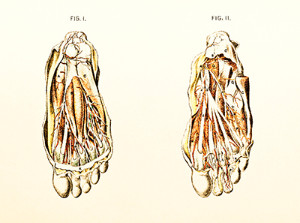 Peripheral artery disease (PAD) is a condition that causes poor circulation in the lower limbs due to blockages in the blood vessels that supply blood to this area. There are a variety of diagnostic tests that a doctor may use to diagnose you with PAD. Most of these tests are quick, painless, and noninvasive. The ankle-brachial index is a screening for PAD in which the doctor takes your blood pressure at your arm and at your ankle and then compares the two numbers to determine how well blood is flowing in your lower limbs. The Doppler ultrasound is an imaging test that visualizes the blood flow in the major arteries and veins and can determine where there may be a blockage. A treadmill test, in which you are asked to walk on a treadmill, can show the severity of your PAD symptoms and the level of activity that brings them on. To be tested for PAD, or to learn more about this condition, talk to a podiatrist today.
Peripheral artery disease (PAD) is a condition that causes poor circulation in the lower limbs due to blockages in the blood vessels that supply blood to this area. There are a variety of diagnostic tests that a doctor may use to diagnose you with PAD. Most of these tests are quick, painless, and noninvasive. The ankle-brachial index is a screening for PAD in which the doctor takes your blood pressure at your arm and at your ankle and then compares the two numbers to determine how well blood is flowing in your lower limbs. The Doppler ultrasound is an imaging test that visualizes the blood flow in the major arteries and veins and can determine where there may be a blockage. A treadmill test, in which you are asked to walk on a treadmill, can show the severity of your PAD symptoms and the level of activity that brings them on. To be tested for PAD, or to learn more about this condition, talk to a podiatrist today.
Vascular testing plays an important part in diagnosing disease like peripheral artery disease. If you have symptoms of peripheral artery disease, or diabetes, consult with Dr. Michael D. Garvin from Florida. Our doctor will assess your condition and provide you with quality foot and ankle treatment.
What Is Vascular Testing?
Vascular testing checks for how well blood circulation is in the veins and arteries. This is most often done to determine and treat a patient for peripheral artery disease (PAD), stroke, and aneurysms. Podiatrists utilize vascular testing when a patient has symptoms of PAD or if they believe they might. If a patient has diabetes, a podiatrist may determine a vascular test to be prudent to check for poor blood circulation.
How Is it Conducted?
Most forms of vascular testing are non-invasive. Podiatrists will first conduct a visual inspection for any wounds, discoloration, and any abnormal signs prior to a vascular test.
The most common tests include:
- Ankle-Brachial Index (ABI) examination
- Doppler examination
- Pedal pulses
These tests are safe, painless, and easy to do. Once finished, the podiatrist can then provide a diagnosis and the best course for treatment.
If you have any questions, please feel free to contact our offices located in Port St. Lucie, FL . We offer the newest diagnostic and treatment technologies for all your foot care needs.
Read more about Vascular Testing in Podiatry
How Are Foot Stress Fractures Diagnosed?
 A stress fracture in the foot refers to a small crack in the bone of the foot. Foot fractures are frequently caused by overuse and repetitive activities, such as running. Symptoms of a stress fracture include a deep and dull pain, tenderness, weakness, swelling, and bruising in the affected foot. Getting this condition diagnosed begins with a trip to the podiatrist’s office. The doctor will ask you about your medical history, including any prior injuries, as well as questions about your lifestyle and daily activities. The doctor will then complete a physical examination of your foot. Sometimes, diagnostic imaging exams such as X-rays, MRIs, or ultrasounds may be used to confirm the diagnosis. If you believe that you have a stress fracture in your foot, it is recommended that you visit a podiatrist for proper diagnosis and treatment.
A stress fracture in the foot refers to a small crack in the bone of the foot. Foot fractures are frequently caused by overuse and repetitive activities, such as running. Symptoms of a stress fracture include a deep and dull pain, tenderness, weakness, swelling, and bruising in the affected foot. Getting this condition diagnosed begins with a trip to the podiatrist’s office. The doctor will ask you about your medical history, including any prior injuries, as well as questions about your lifestyle and daily activities. The doctor will then complete a physical examination of your foot. Sometimes, diagnostic imaging exams such as X-rays, MRIs, or ultrasounds may be used to confirm the diagnosis. If you believe that you have a stress fracture in your foot, it is recommended that you visit a podiatrist for proper diagnosis and treatment.
Activities where too much pressure is put on the feet can cause stress fractures. To learn more, contact Dr. Michael D. Garvin from Florida. Our doctor can provide the care you need to keep your pain free and on your feet.
Dealing with Stress Fractures of the Foot and Ankle
Stress fractures occur in the foot and ankle when muscles in these areas weaken from too much or too little use. The feet and ankles then lose support when walking or running from the impact of the ground. Since there is no protection, the bones receive the full impact of each step. Stress on the feet can cause cracks to form in the bones, thus creating stress fractures.
What Are Stress Fractures?
Stress fractures occur frequently in individuals whose daily activities cause great impact on the feet and ankles. Stress factors are most common among:
- Runners
- People affected with Osteoporosis
- Tennis or basketball players
- Gymnasts
- High impact workouts
Symptoms
Pain from the fractures occur in the area of the fractures and can be constant or intermittent. It will often cause sharp or dull pain with swelling and tenderness. Engaging in any kind of activity which involves high impact will aggravate pain.
If you have any questions please feel free to contact our offices located in Port St. Lucie, FL . We offer the newest diagnostic and treatment technologies for all your foot and ankle needs.
Read more about Stress Fractures of the Foot and Ankle
